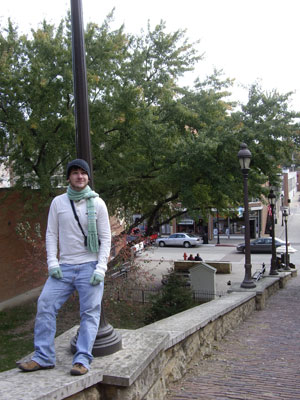All Nonfiction
- Bullying
- Books
- Academic
- Author Interviews
- Celebrity interviews
- College Articles
- College Essays
- Educator of the Year
- Heroes
- Interviews
- Memoir
- Personal Experience
- Sports
- Travel & Culture
All Opinions
- Bullying
- Current Events / Politics
- Discrimination
- Drugs / Alcohol / Smoking
- Entertainment / Celebrities
- Environment
- Love / Relationships
- Movies / Music / TV
- Pop Culture / Trends
- School / College
- Social Issues / Civics
- Spirituality / Religion
- Sports / Hobbies
All Hot Topics
- Bullying
- Community Service
- Environment
- Health
- Letters to the Editor
- Pride & Prejudice
- What Matters
- Back
Summer Guide
- Program Links
- Program Reviews
- Back
College Guide
- College Links
- College Reviews
- College Essays
- College Articles
- Back
What it Means to be a New Canaanite
What it Mean to be a New Canaanite
The stone eyes of the 19th century New Englanders stare back at me as I search their faces for some sort of connection—anything I can relate to. Their wide-brimmed hats, worn blue jeans, and filthy aprons lend no familiarity, however. I flip through a few more documents to find a stout and crudely constructed gray lean-to cabin next to a massive watermill. I begin to discard the ancient daguerreotype to the “irrelevant” pile, but quickly pull it back and scrutinize it again. There was something familiar about the old wooden house, but I could not place what it was. Frustrated, I flip the photograph back over to readdress it later, but the faded penciled in handwriting on the back catches my eye—“Silvermine Tavern.”
I look back at the lists of artists, the Silvermine families, the exhibitions, and now this symbolic tavern, unable to put the pieces together in an organized, coherent fashion. Pushing the folder of old town documents to the side I leave the New Canaan Historical Society and start on my way home. Just as I am exiting however, I have an idea. I run back into the building and retrieve the folder this time turning due east instead of my usual route home.
I know I have arrived to my destination when greeted by the “Welcome to the Historical Silvermine” sign in eastern New Canaan. Although I have a lot of friends who live near the historical district, I live on the West side of town and rarely travel these roads. My eyes quickly recognize the cabin in the picture; it looks almost identical, with only a few minor repairs since its original state. I get out and examine the simple yet striking scene of the yellow fields and green grass, soft earthen ground and dusty dirt roads, and the little flowing stream—no more than ten feet across—turning the mill that is so powerful it is called the Silvermine River.
The air is somehow fresher and the water somehow more natural in this shrine of my beloved small town’s history. I quickly tour the modest Silvermine Arts Center exhibit, which still champion the prized works of their legendary Solon Borglum and Harold Paget whose faces decorate the walls like royalty. I sit on an old wooden bench with my folder from the Historical Society and sort through the pictures, organizing them into categories as if it were second nature. I find the photo of the 19th century laborers that felt so distant just an hour ago and quickly recognize them as the aging Henry Guthrie and young Solon Borglum from the exhibit. I chisel out their stark faces with the deftness of the famous sculptor Borglum himself. Their lips are chapped and split from the autumn Connecticut cold; their noses are of leaders, poignant and proud; their muscles are hardened from years of labor; their jaws are strong and square, but lined with creases from smiling; their eyes are as wise as a visionary’s, an electric sense of intelligence peering out past their humbly clothed bodies, as they gaze out past the Old Mill and Silvermine Tavern. My eyes look upon the same small wooden bridge that they stood upon over a century ago, which precariously leans over the edge of the commanding stream. This was their home, this is their home. This is what it means to be a New Canaanite.

Similar Articles
JOIN THE DISCUSSION
This article has 0 comments.
